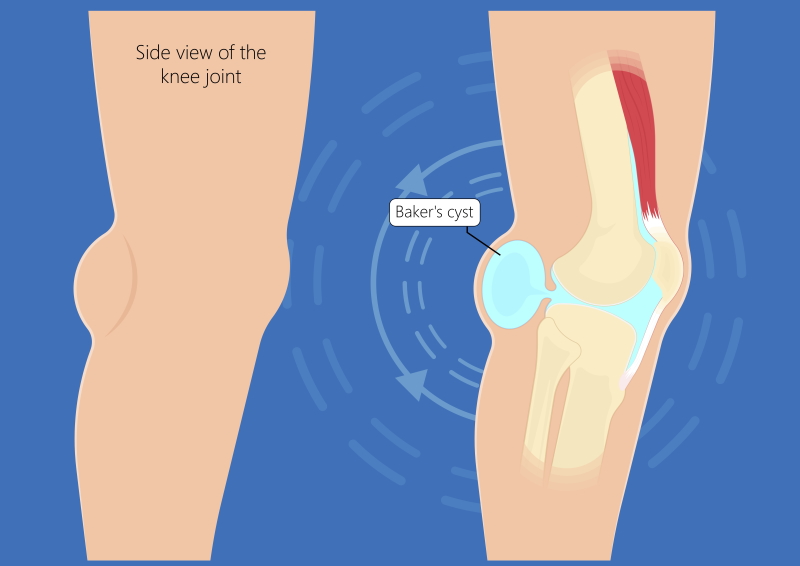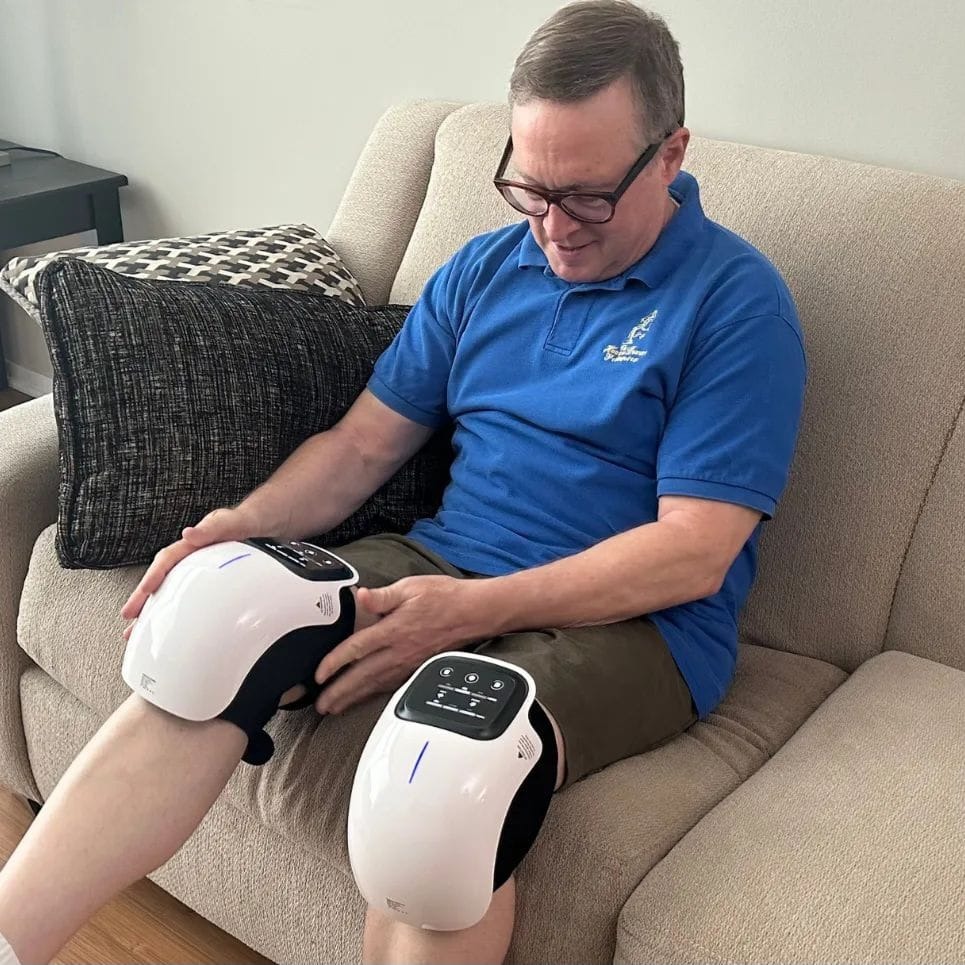Blog
Pain in Back of Knee When Straightening Leg After Sitting: Discover 5 Effective Relief Strategies
Introduction
Experiencing pain in back of knee when straightening leg after sitting can be both uncomfortable and worrisome. This type of pain often disrupts daily activities and raises concerns about underlying health issues. In this article, we will explore 5 effective relief strategies and delve into possible causes to help you understand and manage this discomfort.
Understanding Pain in Back of Knee When Straightening Leg After Sitting
Pain behind the knee when straightening the leg after sitting is a common complaint. It can result from various factors, including muscle stiffness, joint issues, or more serious conditions. Identifying the root cause is crucial for effective treatment and relief.

5 Common Causes and Solutions
1. Muscle Tightness and Inactivity
Cause:
Sitting for prolonged periods can lead to muscle stiffness and reduced blood flow, causing pain when you finally move or straighten your leg.
Solution:
- Regular Movement: Stand up and walk around every 30 minutes.
- Stretching Exercises: Incorporate leg stretches to improve flexibility.
2. Baker’s Cyst
Cause:
A Baker’s cyst is a fluid-filled sac that forms behind the knee, often due to arthritis or a cartilage tear.
Solution:
- Medical Evaluation: Consult a healthcare professional for proper diagnosis.
- Rest and Ice: Reduce activity and apply ice to decrease swelling.
3. Meniscus Tears
Cause:
A tear in the knee’s meniscus cartilage can cause pain, especially when moving from a seated position.
Solution:
- Physical Therapy: Strengthening exercises to support the knee.
- Medical Intervention: In severe cases, surgery may be necessary.
4. Deep Vein Thrombosis (DVT)
Cause:
DVT is a blood clot in a deep vein, usually in the leg, which can cause pain and swelling.
Solution:
- Immediate Medical Attention: DVT is a serious condition requiring prompt treatment.
- Preventive Measures: Stay active and hydrated to reduce risk.
5. Ligament Injuries
Cause:
Damage to ligaments such as the posterior cruciate ligament (PCL) can lead to pain and instability.
Solution:
- Rest and Rehabilitation: Follow a structured recovery program.
- Supportive Devices: Use braces or supports as recommended.

Which of the Following Injuries Include Instability of the Knee with Pain and Swelling?
Ligament injuries, specifically to the anterior cruciate ligament (ACL) and posterior cruciate ligament (PCL), include instability of the knee with pain and swelling. These injuries often result from trauma or sudden movements and can significantly affect knee stability.
Key Points:
- Symptoms: Pain, swelling, and a feeling of the knee giving way.
- Diagnosis: Requires medical imaging and professional assessment.
- Treatment: May involve physical therapy or surgical intervention.
Effective Relief Strategies
Using the MONKIKA Knee Massager for Instant Relief
The MONKIKA Knee Massager offers a powerful solution for alleviating knee pain.
Features:
- Heat Therapy: Promotes blood circulation and eases stiffness.
- Vibration Massage: Relaxes muscles and reduces discomfort.
- Infrared Technology: Penetrates deep tissues for effective relief.
Benefits:
- Instant Pain Relief: Targets the source of pain quickly.
- Improves Mobility: Helps restore range of motion.
- User-Friendly Design: Comfortable and adjustable for all sizes.
Why Choose MONKIKA Knee Massager?
- Innovative Technology: Combines multiple therapies in one device.
- Convenient: Portable and easy to use at home or on the go.
- Trusted Brand: Positive reviews from satisfied users.
Discover how the MONKIKA Knee Massager can provide instant relief by visiting the product page.
Gentle Stretching and Exercises
Incorporating specific exercises can alleviate pain and prevent stiffness.
Exercises:
- Hamstring Stretch: Loosens tight muscles behind the knee.
- Calf Raises: Strengthens supporting muscles.
- Quadriceps Stretch: Improves overall knee flexibility.
Tips:
- Perform exercises slowly and gently.
- Consistency is key for long-term benefits.
Heat and Cold Therapy
Alternating heat and cold can reduce pain and inflammation.
Method:
- Cold Packs: Apply for 15 minutes to reduce swelling.
- Heat Pads: Use for 15 minutes to relax muscles.
Caution:
- Do not apply directly to the skin; use a cloth barrier.
- Monitor skin condition to avoid burns or frostbite.
When to Consult a Healthcare Professional
While home remedies can be effective, it’s important to seek medical advice if:
- Pain Persists: Lasts more than a few days without improvement.
- Severe Symptoms: Intense pain, swelling, or inability to bear weight.
- Signs of DVT: Swelling, warmth, and redness in the leg.
Action Steps:
- Schedule an appointment with a doctor.
- Provide detailed information about your symptoms.
- Follow professional guidance for treatment.

Conclusion
Experiencing pain in back of knee when straightening leg after sitting is a common issue that can stem from various causes. By understanding the underlying factors and implementing effective relief strategies, you can manage the discomfort and improve your quality of life. Tools like the MONKIKA Knee Massager offer innovative solutions for instant pain relief.
Don’t let knee pain hold you back. Discover powerful relief with the MONKIKA Knee Massager today.
Frequently Asked Questions
1. What causes pain in the back of the knee when straightening the leg after sitting?
Common causes include muscle stiffness, Baker’s cyst, meniscus tears, DVT, and ligament injuries.
2. How can I relieve knee pain after sitting?
Regular movement, stretching exercises, heat and cold therapy, and using devices like the MONKIKA Knee Massager can provide relief.
3. Which injuries include instability of the knee with pain and swelling?
Ligament injuries, such as ACL and PCL tears, often cause knee instability along with pain and swelling.
4. When should I see a doctor for knee pain?
If pain persists for more than a few days, is severe, or is accompanied by swelling and difficulty moving the knee, consult a healthcare professional.
5. Is the MONKIKA Knee Massager suitable for all types of knee pain?
The MONKIKA Knee Massager is designed to alleviate various types of knee pain but consult your doctor to ensure it’s appropriate for your specific condition.
This is an advertisement and not an actual news article, blog, or consumer protection update the story depicted on this site and the person depicted in the story are not actual news. Rather, this story is based on the results that some people who have used these products have achieved. The results portrayed in the story and in the comments are illustrative, and may not be the results that you achieve with these products. this page could receive compensation for clicks on or purchase of products featured on this site.
© 2024 All Rights Reserved. Privacy Policy – Terms of Service




